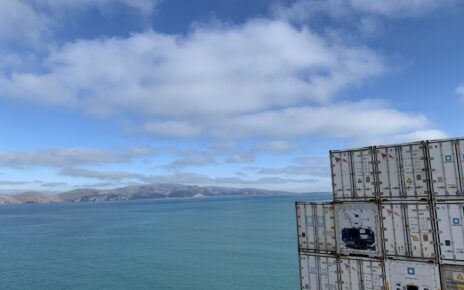The International Ship and Port Facility Security (ISPS) Code is a mandatory security regime for international shipping that was adopted by the International Maritime Organization (IMO) in 2002, following the terrorist attacks of September 11, 2001. The ISPS Code aims to enhance the security of ships and port facilities by establishing a framework for cooperation, roles and responsibilities, risk assessment, security plans and procedures, security levels, training and drills, and verification and compliance.
isps code, isps maritime and imo isps code
The ISPS Code is a set of international standards for maritime security that aims to prevent and respond to security threats on ships and port facilities. It was adopted by the International Maritime Organization (IMO) in 2002 as an amendment to the Safety of Life at Sea (SOLAS) Convention.
The ISPS Code requires ships and port facilities to conduct security assessments, implement security plans, designate security officers, and cooperate with other stakeholders in ensuring maritime security. The ISPS Code also establishes three levels of security, depending on the risk of a security incident: level 1 (normal), level 2 (heightened), and level 3 (exceptional).
The ISPS Code applies to all ships engaged in international voyages that are over 500 gross tonnage (GT) or carry more than 12 passengers, as well as port facilities that serve such ships. Ships and port facilities that comply with the ISPS Code are issued an International Ship Security Certificate (ISSC) or a Statement of Compliance of a Port Facility (SoCPF), respectively.
The ISPS Code is an important measure to enhance the safety and security of global maritime trade and transportation. By following the ISPS Code, ships and port facilities can reduce the risk of terrorist attacks, piracy, smuggling, sabotage, and other criminal activities that may endanger lives, property, and environment.
isps meaning in shipping, isps code meaning, isps maritime meaning, isps meaning maritime
The ISPS Code consists of two parts: Part A and Part B. Part A provides mandatory requirements for the security of ships and port facilities, while Part B provides guidance on how to implement them.
Part A is divided into 19 chapters, covering topics such as:
– General provisions
– Definitions
– Application
– Responsibilities of contracting governments
– Declaration of security
– Obligations of the company
– Ship security assessment
– Ship security plan
– Records
– Ship security officer
– Company security officer
– Port facility security assessment
– Port facility security plan
– Port facility security officer
– Training, drills and exercises on ship security
– Training, drills and exercises on port facility security
– Verification and certification for ships
– Interim certification for ships and port facilities
– Verification and certification for port facilities
Part B provides detailed guidance on how to conduct security assessments, develop and implement security plans, train personnel, conduct drills and exercises, verify compliance, and deal with threats.
The ISPS Code aims to establish an international framework for cooperation among governments, shipping companies, port authorities, and other stakeholders to prevent and respond to acts that threaten maritime security.
isps full form in shipping
the full for the above code stands: international ship and port facility security code.
guide to maritime security and the isps code implementation
If you are building a new ship that will engage in international voyages, you will need to implement the ISPS Code on your ship before it can operate. Here are some steps that you will need to follow:
1. Designate a Company Security Officer (CSO) who will be responsible for overseeing the security of your ship and ensuring compliance with the ISPS Code. The CSO should have adequate knowledge and experience in security matters, as well as access to relevant information and resources.
2. Conduct a Ship Security Assessment (SSA) that will identify and evaluate the potential security threats and vulnerabilities of your ship. The SSA should cover all aspects of your ship’s operations, including its physical structure, equipment, personnel, cargo, passengers, stores, etc. The SSA should also consider the different security levels that may apply to your ship depending on the situation.
3. Based on the SSA results, develop a Ship Security Plan (SSP) that will describe the measures and procedures that you will implement on your ship to prevent or respond to security incidents. The SSP should include details such as:
– The roles and responsibilities of the CSO, Ship Security Officer (SSO), Master and crew members
– The communication channels and reporting procedures for security matters
– The security equipment and systems that you will install or use on your ship
– The access control measures that you will enforce on your ship
– The procedures for handling cargo, passengers, stores and delivery items
– The training and drills that you will conduct for your crew members
– The contingency plans that you will prepare for different scenarios
4. Submit your SSP to your flag state administration or a recognized security organization (RSO) for approval. You may need to revise or modify your SSP based on their feedback or recommendations.
5. Implement your SSP on your ship by installing or activating the necessary security equipment and systems; training or briefing your crew members; conducting drills or exercises; issuing identification cards or badges; etc.
6. Obtain an International Ship Security Certificate (ISSC) from your flag state administration or RSO after they verify that your ship complies with the ISPS Code requirements. You will need to display this certificate on board your ship at all times.
7. Maintain your ISSC validity by conducting regular audits or inspections of your ship’s security system; updating or reviewing your SSP as needed; reporting any changes or incidents affecting your ship’s security; etc.



